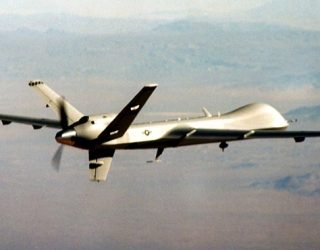Nov 2 2012
Since the arrival of Unmanned Aerial Vehicles on the global military stage well over a decade ago, they've proved capable of operating effectively in a number of roles.
 UAVs in Commercial Airspace. Image copyright USAF - Courtesy Wikimedia Commons
UAVs in Commercial Airspace. Image copyright USAF - Courtesy Wikimedia Commons
Generally, though, their missions have taken place well outside civilian airspace, due to concerns over the prospect of manned and unmanned aircrafts' flight-paths converging.
Now, UAV manufacturer General Atomics has carried out flight trials to try and show that drones and airliners can fly safely in the same areas. Since these flight trials were successful, they could well help introduce UAVs to US skies in much greater numbers than at present.
UAVs in Commercial Airspace
The UAVs in commercial airspace trials were actually staged over two months ago but only now has information on their outcome been supplied to the public domain. They involved a General Atomics MQ-9 Reaper drone, as used by the USAF, Italian Air Force and the RAF.
Formerly known as the Predator B UAV, the MQ-9 Reaper has a top speed of 555 miles per hour, a range of 1,150 miles and an endurance of 14 hours in its heaviest configuration. Specially modified for these flight trials, this Predator was equipped with ADS-B - a location system that's set to be a feature of all commercial aircraft operating in US airspace from 2020 onwards, subject to certain height restrictions.
As expected, the Predator's ADS-B system made the UAV aware of commercial aircraft equipped with the same technology operating in close proximity. Equally, the UAV's own presence was detected and monitored.
Shared Airspace Flight Trials
Consequently, said General Atomics, the intimation is that UAVs and commercial aircraft are able to ‘fly cooperatively and safely" over the US.
Additional shared airspace flight trials are now scheduled to take place.
"We believe ADS-B will play a key role in a future sense-and-avoid system and will support the FAA's ‘Next Gen' initiative, so this is a step in the right direction", explained General Atomics' Aircraft Systems Group president, Frank Pace.